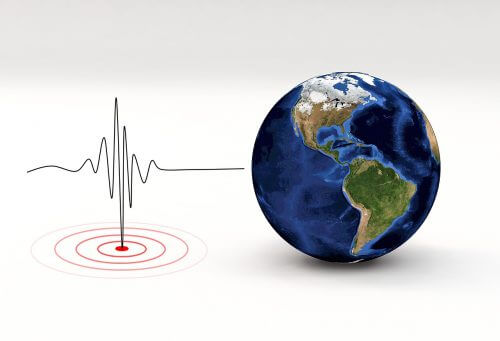In an article published in the journal Science Advances, the team led by Professor Jay Feinberg from the Hebrew University and in collaboration with Prof. Dave Kammer from Cornell University presented for the first time a model describing the laws according to which the physics of earthquakes can be explained by sonic

Earthquakes and fracture mechanics
An earthquake occurs when two adjacent tectonic plates (plates that make up the Earth's crust) move relative to each other parallel to the contact surface between them. Because the edge of the plates is not smooth, the movement of the plates does not occur instantaneously. In fact the rim itself is rough and you can say that two adjacent panels are connected similar to a zipper. Fracture mechanics can be used to explain how an earthquake occurs - in order for movement to occur, the bonds that hold the plates and prevent them from moving must be overcome. Once there is enough energy to overcome these bonds, the movement of the plates cuts the rim like a knife and breaks the bonds.
Earthquakes are classified into several categories - slow and fast tremors. In fact, the acceleration of the plates and the strength of the bonds affects the strength of the earthquake. Slow earthquakes are characterized by slow movement (less than a kilometer per day) of the tectonic plates, so the release of energy is relatively slow (so that the earthquake is barely felt), while fast earthquakes (which can move even faster than the speed of sound and move several kilometers per second) are more powerful and can cause a lot of damage. The most powerful vibrations are supersonic vibrations - which only discovered their existence in recent years. Although earthquakes have been measured on ultrasound, no theory has yet been found that describes the laws according to which the tremors occur.
In a combination of laboratory experiments and theoretical and numerical calculations, for the first time the researchers were able (with the help of mathematical tools developed to describe fracture) to arrive at an accurate theoretical description of how ultrasonic vibrations develop and progress and to verify these predictions in laboratory experiments. Using this model the researchers can know what the speed of the movement of the plates will be, when and where it will stop. These predictions are obtained when it is possible to measure the "trapped tension" between the two plates and other natural characteristics (for example, the material from which the plates are made and the medium that separates them).
prevent the next earthquake
It turns out that this research also has practical implications for earthquakes and perhaps in the future for their prevention as well. The idea comes from the Oklahoma region in the United States where many oil drillings are conducted. The oil is stored in reservoirs in the ground and the main challenge is to find where the reservoirs are. As soon as the oil is emptied from the reservoir, instead of looking for the next reservoir from the ground, the drillers create tremendous pressure in the empty space and create cracks that tend to reach nearby reservoirs. The crack allows oil to pass through and drillers to pump oil more easily.
A side effect of these drillings are earthquakes - the cracks that are created are a trigger for the next earthquake, luckily, the tensions between the plates are low and the vibrations that are created are small. This idea can also be applied in other areas such as the Syrian African fault or in Los Angeles to release the accumulated pressure between the plates, but without knowledge and mapping of the ground it is difficult to know where to trigger the earthquake for fear that it may trigger a powerful earthquake, therefore this idea is not really implemented Currently as a contraceptive. In the laboratory, on the other hand, all the information is with the researcher and by mapping the contact surface and calculating the stresses it is possible to know how the tremor will occur, at what speed and where it will stop.
More of the topic in Hayadan:

2 תגובות
I saw the original article, very nice, and the publication in Nature means that the scientific community takes the research very seriously.
Stunning